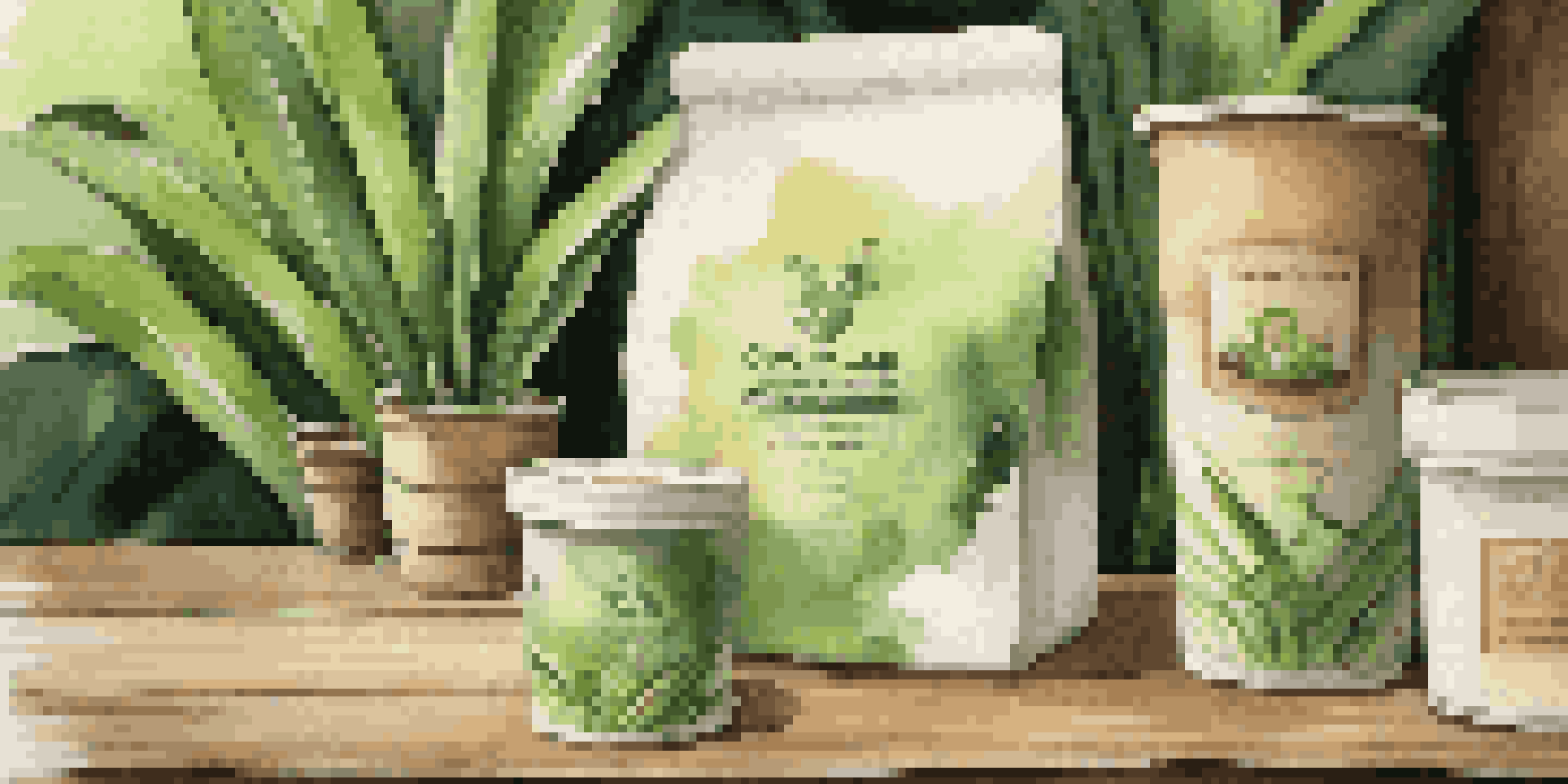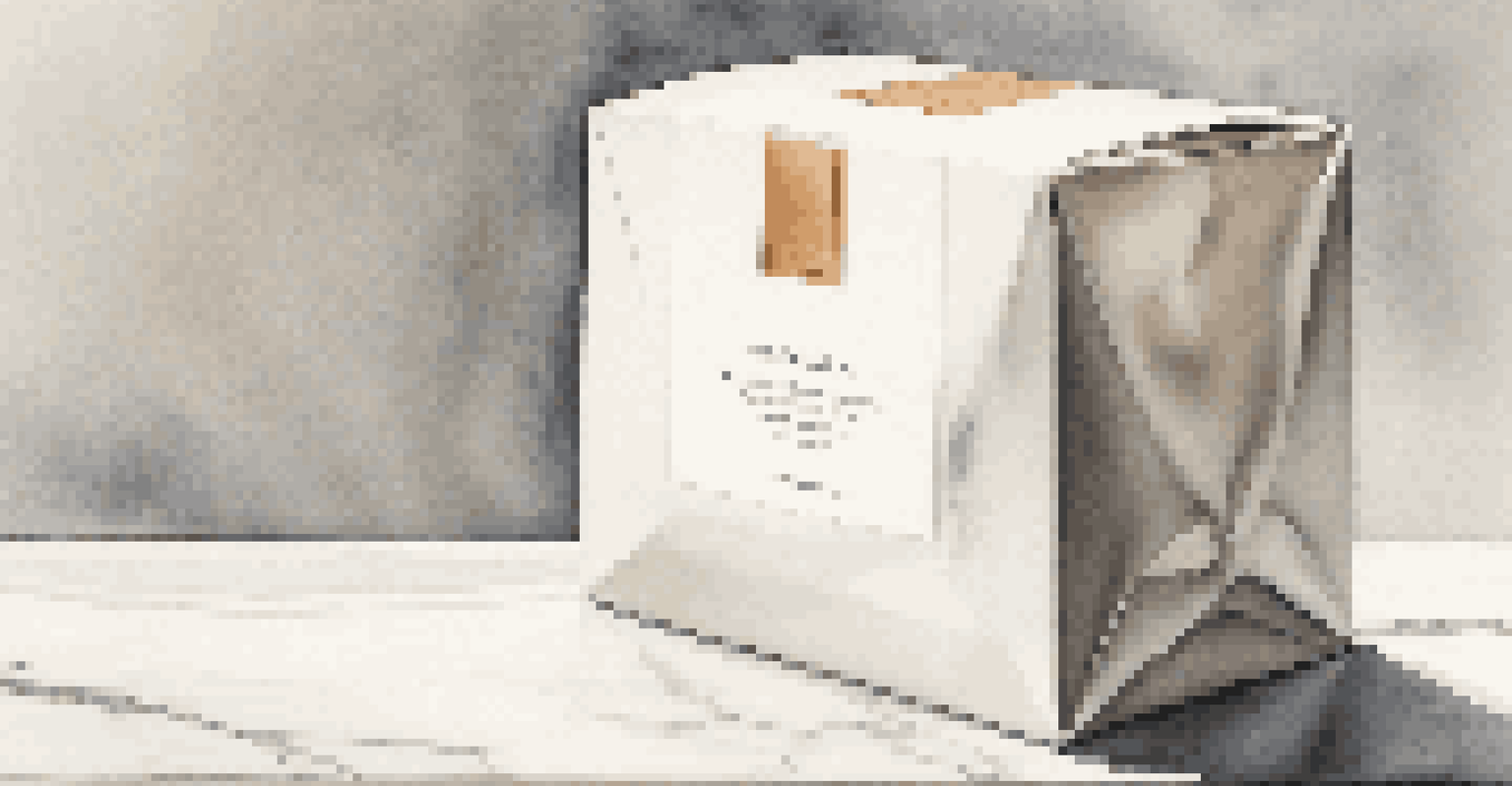Packaging Innovations for Reduced Environmental Impact

Understanding the Environmental Impact of Packaging
Packaging plays a crucial role in protecting products, but it often leaves a significant environmental footprint. From plastic waste in oceans to carbon emissions during production, traditional packaging methods can harm our planet. As consumers become more eco-conscious, the need to understand this impact is growing.
We do not inherit the earth from our ancestors; we borrow it from our children.
For instance, a study found that nearly 30% of plastic waste comes from packaging materials. This alarming statistic highlights the urgency for businesses to rethink their packaging strategies. By acknowledging the environmental consequences, companies can take meaningful steps towards sustainable practices.
Recognizing the problem is the first step. Individuals and organizations alike are now motivated to seek innovative solutions that not only protect the product but also benefit the environment. Embracing this mindset paves the way for creative packaging innovations.
The Rise of Biodegradable Packaging Materials
Biodegradable packaging is becoming a popular alternative to traditional plastics. Made from natural materials like cornstarch or sugarcane, these products break down more easily in the environment. This innovation not only reduces landfill waste but also minimizes pollution.

For example, companies like BioBag produce compostable bags that decompose in just a few months. This contrasts sharply with conventional plastic, which can take centuries to break down. As more brands adopt biodegradable materials, consumers can feel good about their choices.
Eco-Friendly Packaging Options Rise
The shift towards biodegradable and reusable packaging materials is gaining momentum as consumers seek more sustainable choices.
This shift towards biodegradable packaging is a win-win situation. It allows companies to meet sustainability goals while appealing to environmentally conscious customers. As awareness grows, we can expect even more innovative materials to emerge in the packaging industry.
Reusable Packaging: A Sustainable Trend
Reusable packaging is gaining traction as a sustainable alternative to single-use options. Think of it like your favorite coffee cup that you bring to your local café. By using this cup repeatedly, you’re reducing waste and making a positive environmental impact.
The greatest threat to our planet is the belief that someone else will save it.
Brands like Loop are revolutionizing the idea of reusable packaging by offering products in durable containers that can be returned and refilled. This system not only cuts down on waste but also encourages a circular economy, where products are reused rather than discarded. It's a simple concept with a powerful effect.
By embracing reusable packaging, companies can foster customer loyalty and demonstrate their commitment to sustainability. As more consumers seek out brands with eco-friendly practices, reusable packaging becomes a compelling choice that benefits both the planet and businesses.
Minimalist Packaging: Less is More
Minimalist packaging is all about reducing excess. Imagine a beautifully packaged product that uses only the essentials—no frills, no unnecessary layers of plastic. This approach not only cuts down on materials but also enhances the product's appeal.
Many brands are now opting for minimalistic designs that require fewer resources to produce. By focusing on simplicity, companies can lower their environmental impact while creating a modern aesthetic that resonates with consumers. This trend shows that sometimes, less truly is more.
Minimalist Design Reduces Waste
Adopting minimalist packaging not only cuts down on material use but also appeals to modern consumer aesthetics.
Minimalist packaging can also lead to cost savings for companies. By using fewer materials, brands can reduce production and shipping costs, which can then be passed on to consumers. It's a smart strategy that aligns with sustainability goals and customer preferences.
Smart Packaging: Technology Meets Sustainability
Smart packaging is an innovative approach that integrates technology to enhance sustainability. This can include features like QR codes that provide recycling information or sensors that monitor freshness. It’s like giving your package a brain, making it more functional and eco-friendly.
For example, some packaging now includes biodegradable sensors that track the freshness of food products. This helps reduce food waste by ensuring consumers only purchase what they need. By merging technology with packaging, businesses can create smarter solutions that benefit both consumers and the environment.
As smart packaging continues to evolve, we can expect more exciting developments. This trend not only enhances user experience but also promotes responsible consumption. By embracing smart technology, companies can lead the charge toward a more sustainable future.
Recycling Innovations in Packaging Design
Innovative recycling methods are transforming how we view packaging waste. Instead of ending up in landfills, packaging materials can now be repurposed into new products. This circular approach minimizes environmental impact and maximizes resource efficiency.
Companies are exploring ways to make their packaging easier to recycle, such as using single-material designs that can be processed without contamination. For instance, brands like Coca-Cola have pledged to use 50% recycled content in their packaging by 2030. These initiatives demonstrate that recycling can play a vital role in sustainable packaging.
Innovations Enhance Recycling Efforts
New recycling methods and smart packaging technologies are transforming waste into valuable resources, promoting a circular economy.
By prioritizing recycling innovations, businesses can not only enhance their environmental credentials but also engage consumers in the process. When customers see that their choices contribute to a sustainable cycle, they’re more likely to support brands that prioritize recycling.
The Future of Sustainable Packaging Innovations
The future of sustainable packaging is bright, with endless possibilities for innovation. As technology advances and consumer preferences shift, we can expect even more creative solutions to emerge. This evolution will not only address current environmental challenges but also set new standards for the industry.
For example, researchers are exploring the use of algae-based packaging materials that offer biodegradability and a lower carbon footprint. These groundbreaking developments could revolutionize the packaging landscape, paving the way for more sustainable options. Imagine a world where packaging is as eco-friendly as the products it protects.

Ultimately, the future of packaging lies in collaboration between consumers, businesses, and innovators. By working together, we can drive change and create a more sustainable world. The journey toward eco-friendly packaging is just beginning, and it holds great promise for both people and the planet.